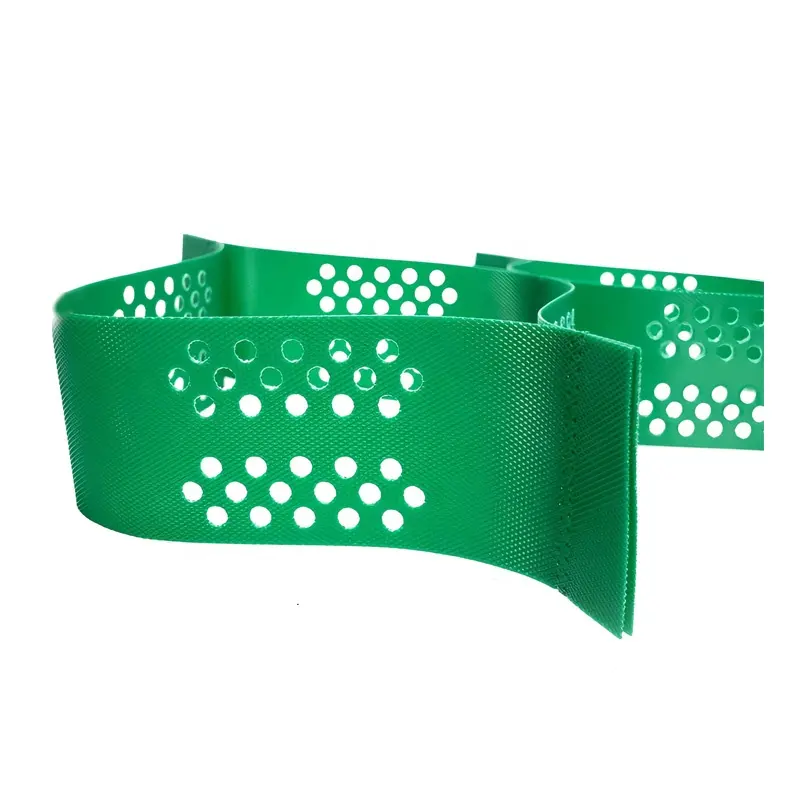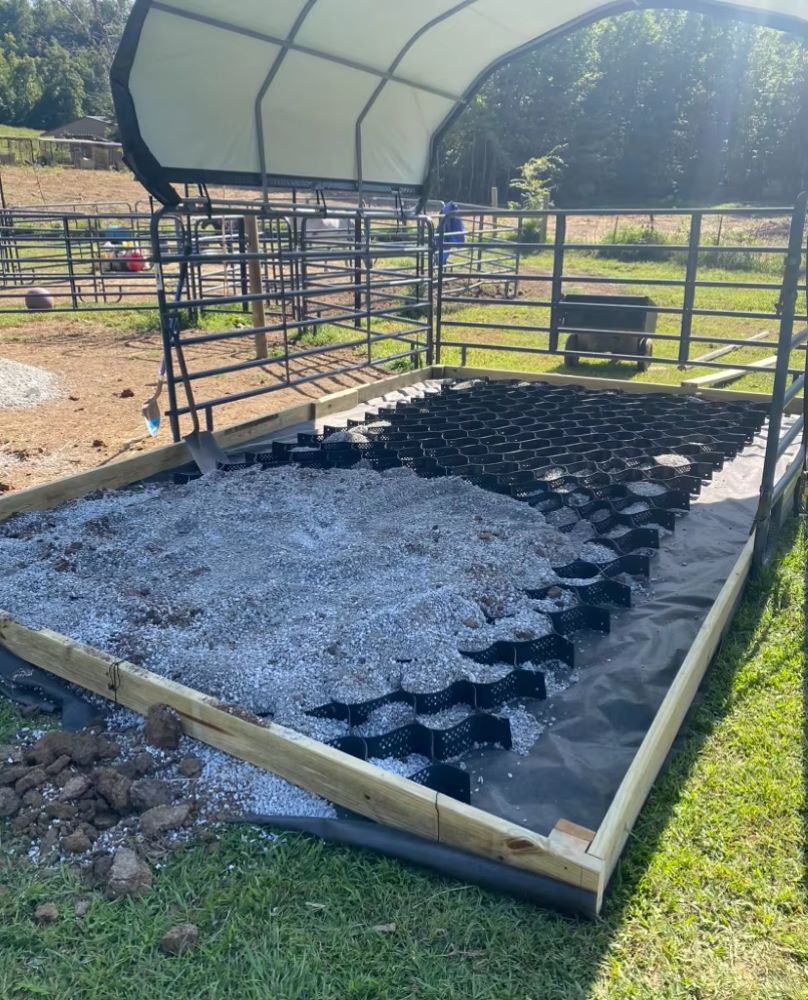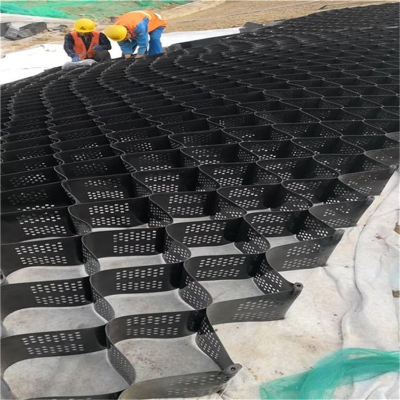Why Are Honeycomb Grids Changing the Way We Build Roads? Understanding the Science Behind HDPE Geocells
In present day years, infrastructure development has quietly undergone a revolution. One of the most significant enhancements doesn’t appear like much at first glance — a lightweight, expandable plastic grid. But as quickly as deployed, these HDPE Geocells play a imperative role in stabilizing soil, distributing loads, and preventing erosion. What makes these honeycomb-shaped grids so effective? And why are engineers an growing wide variety of relying on them for road construction and slope protection?
Let’s take a nearer seem at the science, the applications, and the long-term fee of HDPE Geocell technology.
What Exactly Is an HDPE Geocell and How Does It Function?
A HDPE Geocell is a type of cell confinement machine made from high-density polyethylene (HDPE). In storage, the cloth is compact — like a folded accordion. But when stretched out on-site, it forms a honeycomb grid that can be crammed with soil, gravel, sand, or concrete. Once filled, this device will become a highly stable, semi-rigid platform that can help heavy masses and enhance the performance of vulnerable soils.
What units HDPE Geocells aside is their ability to furnish lateral confinement. By locking the fill cloth within man or woman cells, the geocell minimizes moving and motion under stress. This attribute is particularly treasured in locations where soil power is naturally low or inconsistent.
In good terms, an HDPE Geocell spreads out pressure from traffic or structural loads, stopping rutting and settlement — two of the most common causes of untimely avenue failure. The three-dimensional confinement restricts lateral movement of infill and helps create a stronger, more uniform layer that continues steadiness over time.
Geocells are additionally highly adaptable, making them appropriate for irregular terrains, slopes, and curved alignments. This flexibility is key in infrastructure initiatives that must accommodate herbal landscapes except giant earthmoving. When used in combination with geotextiles and drainage layers, they can shape built-in systems that deal with both structural and environmental challenges.
Why Are Geocells So Widely Used in Modern Road Construction?
Road engineers continuously hostilities two key problems: bad subgrade soils and high loading demands. In the past, fixing these problems intended hauling in widespread portions of expensive overwhelmed stone or the usage of thick layers of asphalt. But these traditional solutions are now not entirely costly — they’re environmentally taxing as well.
This is where HDPE Geocell structures furnish a smarter alternative.
When placed between the base course and subgrade layer, geocells improve load distribution and dramatically restrict the stress reaching the underlying soil. In effect, they turn weak soil into a multiplied foundation without the need to do away with or replacement it.
In soft or water-logged areas, geocells prevent shear failure and minimize flooring deformation. In mountainous or hilly terrain, they improve traction and prevent erosion. For transient access roads, they grant a quick-deploy option that can be dismantled and reused.
By the usage of HDPE Geocells, contractors often decrease down on aggregate utilization by up to 50%, without compromising protection or lifespan. The end result is a cost-effective and environmentally conscious solution that meets modern-day infrastructure demands.
Moreover, geocells can extend pavement existence by way of minimizing fatigue cracking and floor deformation. This long-term performance reduces the want for typical repairs and maintenance.
Road development in permafrost zones or marshlands also advantages from geocells, which distribute load evenly throughout ice lenses or unstable natural matter, preventing heaving and thaw settlement.
How Do HDPE Geocells Actually Reinforce Soil and Distribute Loads?
The effectiveness of HDPE Geocell structures is grounded in fundamental soil mechanics. Normally, unconfined soils — specifically loose or granular kinds — are inclined to lateral motion under pressure. The end end result is deformation, subsidence, or rutting over time.
By introducing a cellular grid, engineers are truly locking the soil in place. Each cell acts like a mini-retaining wall, limiting how loads the fill can move. When a vehicle passes overhead or a shape applies downward pressure, the geocell spreads that force at some point of a wider area. This redistribution reduces stress intensity and protects the subgrade from localized failure.
Furthermore, the friction between the infill cloth and the cell partitions provides any other layer of resistance. In tests, HDPE Geocells have been shown to amplify the California Bearing Ratio (CBR) of soil by means of a number of multiples — meaning a soil that would usually fail below reasonable pressure can now help trucks, cranes, or containers.
This load-spreading capability is particularly useful for tasks involving vulnerable or expansive clays, silts, and different problematic soils that are many times observed round the world.
Dynamic loading conditions such as shifting traffic, seismic activity, and freeze-thaw cycles can additionally be mitigated with the aid of HDPE Geocell systems, which help soak up and redistribute kinetic energy.
Recent studies the use of finite issue modeling have confirmed that the stress power within the soil-geocell composite is extensively decrease than that of traditional soil beds. This translates immediately into higher performance, longer lifespan, and fewer failures.
What Are the Main Applications of HDPE Geocells?
The versatility of HDPE Geocell technological know-how makes it applicable to a large vary of civil, military, and environmental engineering projects.
Some of the most familiar applications include:
- Reinforcement of paved and unpaved roads
- Railway embankments and song beds
- Retaining wall facings and earth retention systems
- Shoreline, riverbank, and coastal protection
- Load help systems for ports, logistics hubs, and industrial zones
- Slope and embankment stabilization to prevent erosion
- Protection of geomembranes in landfills and mining operations
In erosion manipulate scenarios, geocells can be crammed with a vegetated soil combine to create natural-looking green slopes. When mounted on steep inclines, the cells furnish anchoring that resists sliding and protects plant roots from washout for the duration of heavy rainfall.
HDPE Geocells are also used in heliports, airport taxiways, and oil drilling sites, where heavy and repetitive lots demand excessive ground stability. In these environments, traditional pavement constructions regularly underperform or degrade rapidly.
In rural infrastructure development, geocells allow low-volume roads to be constructed with close by materials, notably reducing costs while making sure year-round access. This has made a tremendous impact in agricultural zones, mining areas, and humanitarian alleviation logistics.
Why Is HDPE the Ideal Material for Geocells?
High-density polyethylene, or HDPE, offers an outstanding balance of strength, flexibility, and chemical resistance — all indispensable features for geocell applications.
Here’s why HDPE is the preferred material for geocells:
- It resists degradation from sunlight, temperature fluctuations, and harsh chemicals.
- It affords terrific durability and maintains its shape below dynamic loading.
- It’s bendy enough to be compacted at some point of transport and without troubles expanded on site.
- It is environmentally friendly, with many HDPE Geocells made from recycled material.
The chemical and mechanical resilience of HDPE ensures that geocells keep their shape, strength, and performance over decades. That’s a key obtain in infrastructure where sturdiness is a major concern.
Additionally, HDPE is non-toxic and inert, making it secure for use in touchy ecosystems and environmentally regulated zones. Whether for wetland crossings or inexperienced retaining walls, HDPE-based geocells meet strict environmental security standards.
HDPE’s thermoplastic properties moreover make it easy to weld at some point of manufacturing and installation, ensuring uniform seams and everyday performance even in stressful climates.
How Do HDPE Geocells Contribute to Sustainable Construction?
With growing stress to reduce the environmental footprint of construction, HDPE Geocells provide a pathway to greener projects.
These are some of the ways geocells aid sustainability:
- Reduced need for imported aggregates and base materials
- Lower carbon emissions from building machinery and hauling
- Support for the reuse of marginal or close by infill materials
- Longer service existence reduces maintenance and replacement frequency
- Encouragement of vegetation expand in inexperienced infrastructure design
Because HDPE Geocell systems are reusable and recyclable, they align well with circular economic system practices. Whether used in urban greenways or rural road networks, their environmental blessings are clear.
In addition, geocells promote stormwater infiltration and limit surface runoff, which helps prevent flooding in metropolis developments. This makes them a treasured component in sustainable drainage systems (SuDS) and climate-resilient infrastructure.
From LEED-certified buildings to eco-industrial parks, geocells are an growing number of more used to meet sustainability targets whilst bettering useful performance. As sustainability metrics evolve, HDPE Geocells offer a tangible way to reduce embodied carbon and promote greener design.
What Engineering Principles Make Geocell Systems So Effective?
The core electricity of HDPE Geocell structures lies in several well-established engineering principles:
1. Lateral confinement: Prevents movement of fill cloth underneath stress.
2. Membrane effect: Geocell layers distribute loads across a huge surface.
3. Improved shear resistance: The infill interlocks with the cellphone walls.
4. Load dispersion: Reduces pressure concentrations at weak points.
Together, these requirements make sure that even unstable ground can support current day infrastructure. The science is sound — and supported via years of field trials and laboratory testing.
Geotechnical modeling and finite element assessment have similarly validated geocell performance, confirming their ability to withstand a range loading scenarios. These insights have motivated adoption in both public and private area tasks worldwide.
Real-world case studies show dramatic improvements in street performance, even under high-axle loads and extreme weather. As lookup continues, design standards for HDPE Geocells are turning into greater refined, giving engineers greater confidence in their performance.
Conclusion: Why HDPE Geocells Are the Future of Ground Stabilization
From their origins in army road construction to today’s large-scale infrastructure projects, HDPE Geocells have proven to be a game-changing technology.
They are lightweight, strong, versatile, and sustainable. More importantly, they clear up actual troubles in a cost-effective way — from vulnerable subgrades to erosion manipulate and beyond.
As construction needs continue to boost and environmental regulations tighten, HDPE Geocells will stay a key tool in the existing day engineer’s toolkit. With applications throughout transportation, energy, environmental restoration, and more, their future is not sincerely promising — it's essential.
With endured innovation and material science improvements, HDPE Geocell buildings are expected to grow to be even more efficient, higher environmentally friendly, and more broadly adopted across every developed and developing nations. The avenue ahead — especially literally — is constructed on geocells.
The next time you tour on a rural street or see a green hillside that resists erosion, consider the invisible science making it possible: HDPE Geocells — the unsung heroes of sustainable engineering.







